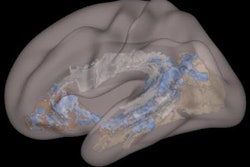Wednesday, December 4 | 11:10 a.m.-11:20 a.m. | SSK16-05 | Room S401CD
Functional MRI (fMRI) could become a valuable tool in predicting the efficacy of deep brain stimulation to treat a debilitating movement disorder known as dystonia.The condition causes uncontrollable muscle contractions and involuntary repetitive movements. One effective treatment for dystonia is deep brain stimulation of the globus pallidus interna, which is located in the basal ganglia and is associated with movement.
Unfortunately, as many as 25% of patients do not respond to deep brain stimulation due, in part, to the lack of an objective biomarker. In addition, it generally takes time for dystonic symptoms to improve after deep brain stimulation, further confounding an accurate assessment of treatment.
To that end, Dr. Lela Okromelidze from the department of radiology at the Mayo Clinic in Jacksonville, FL, will outline how fMRI could be used to assess brain connectivity patterns that could confirm a positive response to deep brain stimulation.
Okromelidze and colleagues analyzed 39 patients who underwent optimized deep brain stimulation of the globus pallidus interna. The researchers began by calculating each subject's Unified Dystonia Rating Scale (UDRS) score, which represents the severity of the condition, before and after surgery. They also estimated the volume of activated tissue based on the final deep brain stimulation programming settings, among other analyses.
Stimulation volumes with greater connectivity to the brain's motor network correlated with improved UDRS scores and better patient response to treatment, the group found. In light of the results, fMRI appears to be a promising tool for predicting dystonia patients' response to deep brain stimulation treatment.



.fFmgij6Hin.png?auto=compress%2Cformat&fit=crop&h=100&q=70&w=100)




.fFmgij6Hin.png?auto=compress%2Cformat&fit=crop&h=167&q=70&w=250)











